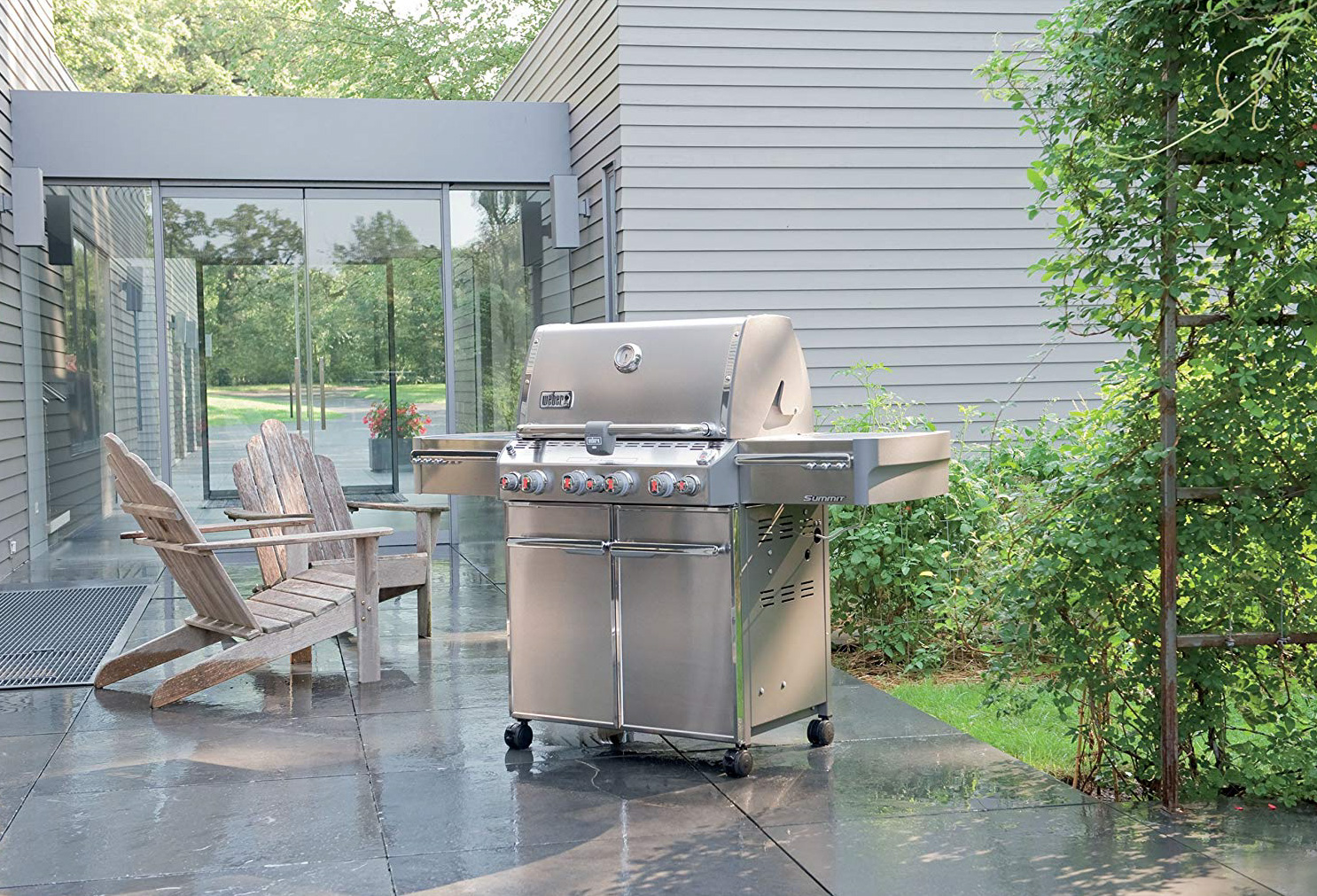This content has been archived. It may no longer be relevant

Weber grills are synonymous with backyard barbecues and outdoor cooking.
With a legacy spanning several decades, Weber has established itself as one of the most trusted names in the grilling industry.
Known for their innovation, quality, and commitment to the art of grilling, Weber grills have become an essential part of countless households.
In this article, we will delve into the manufacturing locations of Weber grills, shedding light on where these iconic grills are made and the factors that influence their production.
The History of Weber Grills
To understand where Weber grills are made today, it’s essential to explore their rich history.
The story begins in 1952 when George Stephen Sr. invented the iconic Weber Kettle grill.
This groundbreaking design laid the foundation for the brand’s future success.
Over the years, Weber has introduced a wide range of grill models, each representing a step forward in grilling technology and craftsmanship.
The journey of Weber grills from a small backyard invention to a global grilling phenomenon is marked by a commitment to excellence that continues today.
Weber Grill Manufacturing Locations
Weber grills are produced in several manufacturing facilities worldwide.
The primary manufacturing locations include:
- Huntley, Illinois, USA: This is where Weber’s flagship and most popular grills, including the Weber Kettle, Genesis, and Summit series, are produced.
- Palatine, Illinois, USA: Weber also has a facility in Palatine that contributes to grill production.
- Arlington, Texas, USA: Some of Weber’s grills are manufactured in Arlington, reflecting the company’s commitment to meeting high demand.
- Huntingdon, Tennessee, USA: This facility focuses on the production of some of Weber’s smaller grills and accessories.
- Kufstein, Austria: Weber has a manufacturing location in Austria to serve its European market, producing grills designed specifically for European consumers.
- Bangalore, India: Weber grills catering to the Asian market are manufactured in India.
These facilities are strategically located to ensure efficient production and distribution, allowing Weber to reach customers around the world.
Quality Assurance and Craftsmanship
At the heart of every Weber grill lies a commitment to quality and craftsmanship.
Weber’s manufacturing processes prioritize precision and attention to detail.
Each grill is meticulously constructed using high-quality materials and undergoes rigorous quality assurance checks to ensure it meets the company’s exacting standards.
This dedication to craftsmanship is a testament to Weber’s commitment to providing grills that not only deliver exceptional performance but also stand the test of time.
Weber’s Commitment to Sustainability
In recent years, sustainability has become a crucial consideration in manufacturing.
Weber has recognized this importance and taken steps to minimize its environmental footprint.
They have implemented various sustainable practices, including using energy-efficient manufacturing processes, reducing waste, and sourcing materials responsibly.
Weber’s commitment to sustainability reflects its dedication to not only grilling excellence but also environmental responsibility.
Weber Grill Models and Their Origins
Weber offers a diverse range of grill models, each designed to cater to specific grilling needs.
Here are some popular Weber grill series and their manufacturing origins:
- Weber Kettle Series: The iconic Weber Kettle grills are primarily manufactured in Huntley, Illinois, USA.
- Weber Genesis Series: These grills are also produced in Huntley, Illinois, USA, known for their quality and performance.
- Weber Summit Series: The Summit series, known for its premium features, is crafted in Huntley, Illinois, USA.
- Weber Spirit Series: Some Spirit series grills are also manufactured in the USA, while others may be produced in other locations to meet demand.
Understanding where these grill series are made can help consumers make informed choices when selecting a Weber grill that suits their needs.
Factors Influencing Production Locations
The location of Weber grill manufacturing facilities is influenced by various factors. These factors may include:
- Market Demand: Manufacturing locations are chosen strategically to meet the demand in specific regions.
- Logistics: Proximity to distribution centers and transportation hubs plays a crucial role in reducing shipping costs and delivery times.
- Cost Efficiency: Weber evaluates the cost-effectiveness of manufacturing in different regions, taking into account labor costs, taxes, and other expenses.
- Skilled Labor: Access to a skilled workforce is a key consideration in selecting manufacturing locations.
By carefully considering these factors, Weber ensures that its grills are both accessible and affordable to a global customer base.
Comparing Different Weber Grill Series
Weber offers a variety of grill series, each with its unique features and capabilities.
Let’s compare a few of these series to help you understand their differences:
- Weber Kettle vs. Weber Genesis: While the Kettle series is known for its simplicity and affordability, the Genesis series offers more advanced features and larger cooking areas.
- Weber Genesis vs. Weber Summit: The Genesis series is ideal for those looking for a balance between performance and price, while the Summit series is Weber’s premium line, featuring the latest grilling technology and premium materials.
- Weber Spirit vs. Weber Genesis: The Spirit series is a more compact and budget-friendly option, whereas the Genesis series provides a broader range of sizes and features.
Understanding these distinctions can help you choose the Weber grill that best suits your grilling needs.
Weber Spirit II E-310 3-Burner – The World’s Most Popular 3-Burner Gas Grill
The Weber Spirit II E-310 3-Burner is a high-performance gas grill renowned for its durability and user-friendly features.
Equipped with three independently adjustable burners, porcelain-enameled grates, and the innovative GS4 grilling system, it excels at even heat distribution, creating perfectly seared dishes.
Its compact size makes it suitable for small outdoor spaces, while the built-in thermometer, fuel gauge, and iGrill compatibility enhance the grilling experience.
With solid construction and efficient performance, the Weber Spirit II E-310 is a reliable and versatile choice for outdoor cooking enthusiasts.
Is There a Difference in Quality Between Gas Grills and Charcoal Grills?
Weber gas and charcoal grills are made to the same high standards with excellent fit and finish, durability, and reliability.
Gas grills are typically made from heavier-duty parts because they are more complex and require heavier materials because of their extra weight and larger frames.
Kettle grills, some of the most popular Weber grills, will last for many seasons and are covered for 10 Years with warranties for rust-through and burn-through.
Weber grill warranties average 5 to 10 Years for the cook box, depending on the model.
One advantage of buying a Weber is that the American and global warranty support is excellent, which can’t be said for many of the smaller brands.
Frequently Asked Questions About Weber Grill Production
Let’s address some common questions readers may have regarding Weber grill production:
Q1: Are all Weber grills made in the USA?
A1: While many Weber grills are manufactured in the USA, the company also has production facilities in other countries to meet global demand.
Q2: Are Weber grills made in China?
A2: Weber does not have manufacturing facilities in China. Most of its grills for the American market are made in the USA.
Q3: Are Weber grills made in Europe?
A3: Weber does have a manufacturing facility in Austria to serve the European market, producing grills designed specifically for European consumers.
Q4: Are Weber grills made with stainless steel?
A4: Weber uses high-quality stainless steel in the construction of many of its grills, particularly in its premium series like the Summit.
Q5: Are Weber grills made with cast iron grates?
A5: Some Weber grills feature cast iron grates, known for their excellent heat retention and distribution.
Bottom Line – Where are Weber Grills Made?
 In conclusion, Weber grills are manufactured in several locations worldwide, with a primary focus on the USA to serve the American market.
In conclusion, Weber grills are manufactured in several locations worldwide, with a primary focus on the USA to serve the American market.
The company’s commitment to quality, craftsmanship, and sustainability shines through in every grill they produce.
When shopping for a Weber grill, consider the specific series that align with your grilling preferences, and rest assured that you are investing in a product that has a legacy of excellence and innovation behind it.
Whether you’re a seasoned griller or a novice, a Weber grill is sure to elevate your outdoor cooking experience to new heights.

